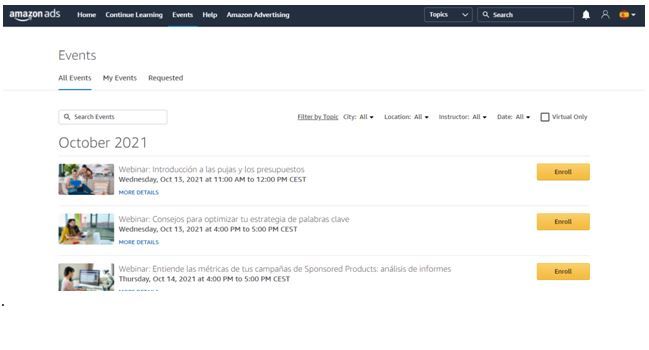
It's a great way spread holiday cheer with holiday emails. Send it first to the most engaged people. Before you send it to everyone, test it. It could cause problems and you may lose the trust of your recipients. Try using a predesigned template from an email template gallery. These templates are already predesigned for holiday emailing.
The highest open rates are generated by Christmas subject lines
Emails containing the phrase Christmas are more likely that they will be opened than email without this phrase. In addition, emails with "Holidays", "Christmas" or other holiday-related words in the subject have higher open rates. Emails containing a percentage discount are also subject to the same results.
After Christmas, email marketers need to refresh their subject line. After all, most subscribers are already tired of holiday emails. They need to be creative and add something to their email campaigns. The following are some examples of effective Christmas subject lines.

Personalize your subject lines for an exceptional experience
Your email marketing strategy must include subject lines. They have the potential to increase open rates and click-through rates. They can make your email look more personal, which can lead directly to deeper connections. These are some suggestions for personalizing your subject lines.
Your subject lines must be memorable. You can achieve this by using unusual sentences, curiosity-invoking queries, or puns. This is an example of a United by Blue holiday message subject line, which features the furry members of the company. It includes 17 adorable pets.
Segment your audience based on cultural practices
Holidays offer a unique opportunity to segment your customer base based upon their cultural practices and lifecycle stage. This is a great way to target existing customers and deepen their relationships with your brand. These are some examples of holiday customers you can target with the appropriate campaigns.
You can segment your audience using a variety of factors, such as income, geographic location, and job type. But, this approach may be too narrow. You may not reach all your potential customers if your audience is too narrow. Therefore, you will need to communicate with multiple groups.

Make sure to use fun images to get people to share the email on social networks.
If you want to encourage people to share your holiday email, use images that remind them of the season. These images will encourage customers to think of your products as gifts and give your shop an festive vibe. These images can be used in social media promotions to attract new customers. Have fun!
To connect with your audience, use Christmas images and quotes. Christmas is synonymous with family and new years, and using quotes about these special times of year can bring your audience closer to you. Consider sharing a Christmas Carol quotation or a favorite movie quote. For an even more engaging experience, you could use a Christmas movie image.
FAQ
Why I shouldn't believe the sale hype in stores and online shops?
Some sites will exaggerate the cost of an item's initial price to make it seem like you are getting more. This is why it's important to do your research and verify the prices that are being offered. Just put the item you're interested in into your cart, so you don't lose it, and then do a quick Google search for the designer's name and the type of product you are shopping for. You may find that the amazing deal you thought you were getting isn't actually so great after all. It is possible to get the same item at a cheaper price.
Do I really need my credit card number to shop online?
It is not necessary to register your credit card. You may want to register your credit card if you would like to receive discounts and special offers. It's always recommended to protect yourself by verifying your identity with your bank.
Is it worth signing-up for insider and reward programs at your local shop?
Rewards are great, but they're not always worth the effort. If you do decide to join an online program, make sure there is value in what you are getting. Be sure to know what you will be spending your time and money on.
Don't sign up for rewards cards just because they offer a signup bonus. Sometimes these bonuses won't be worth the effort to apply for one.
Ask yourself why you are interested in joining rewards programs before you sign up. Many times people join just because their friends are doing it. But if you have no interest in the products or services offered by the company, then you probably won't stick with it long enough to reap any rewards.
Can I purchase clothes online and then return them?
Absolutely! In fact, shopping online is easier than ever. All major retailers offer free returns. Simply print the label and return it to us.
But, you won't get a refund until the item arrives. You will have to return the item if you decide not to buy it.
Are there other things I should be aware of when shopping for clothes online
Before you buy clothes online, there are many things that you need to know. First, you need to know your size. While it might seem obvious, many companies don’t provide this information. So you may have to guess.
Consider shipping costs. Shipping fees will vary depending on the product you are ordering. Be sure to track where your package is headed. Some items ship directly from the manufacturer while others go through a third party warehouse. This can impact delivery times.
Read reviews. There are many bad experiences. Don't let others' experiences affect yours.
What are the advantages and disadvantages of online shopping?
Online shopping offers many benefits to both consumers and retailers. The main benefit is convenience. People can shop anywhere they want. There are no restrictions on what products you can purchase because you don’t have the need to go to shops to browse. There are some disadvantages. Online shoppers might not be able to know the exact cost of an item until they buy it. This could result in them spending more than they should. A disadvantage to this is that customers might feel safer shopping at big-box stores since they are more familiar with the products in person. A customer who buys something online may decide to return it. Finally, brick-and/or-mortar businesses may feel the pressure of online shopping as they might lose business due to online competition.
Statistics
- According to the Federal Trade Commission (FTC), online shopping was the fourth most common fraud category for consumers as of February 2022.5 (thebalance.com)
- A report from the U.S. Census Bureau found that in the first quarter of 2022, an estimated $250 billion was spent on retail e-commerce sales.1 (thebalance.com)
- An approximately 90% increase in price affords Hotel X the opportunity of extreme profits under severe circumstances. (dos.ny.gov)
- Beyond that, you'll be liable for a 25% import tax. (makeuseof.com)
External Links
How To
How to shop safely online
Online shopping can be one of the most convenient and cost-effective ways to purchase goods or services. However, online shopping comes at a high cost. Although there are many benefits to shopping online, there are also potential risks. The biggest risk is identity theft. Identity theft is the biggest risk. Identity thieves can use your personal information (name, address and credit card number) in order to steal money or make fraudulent loans against you. The thieves then sell the stolen information on black markets. Here are some tips to help you keep your business online safe.
-
Use secure websites. SSL encryption is available for free in most online shops to protect customer information. All information you enter on their website, including names, addresses, phone numbers and credit card details, is protected by SSL encryption so that only you can view it. It blocks anyone from seeing the information you enter. Make sure that you have a valid certificate issued from a recognized CA when choosing an online store. When browsing the internet, look out for the green padlock icon near the URL bar.
-
Your password should not be divulged. When you first sign up for a new account, you usually receive an email asking you to confirm your email address and/or username. Make sure you don't share these credentials with any third party. Keep them safe! If someone takes your wallet, they may also have access to your accounts. Save them on your computer instead. It is also recommended that you change your passwords at least once every three months.
-
Keep track of your orders. Track your orders if you are sending items to others or yourself. Many people are scammed by believing they sent something to their own address, when it was actually sent elsewhere. Before you send anything, always verify the tracking number. Do not ship anything without proof that it was delivered. If you're unhappy with the service received, please contact the company immediately.
-
Be aware of who you are dealing with. Many websites will require sensitive information from you, such as your name, date of death, Social Insurance Number, and bank routing numbers. They use these details to identify you so they should be cautious about what information they ask for. Google "what is required" if you are unsure if a website requires this information. You'll find many solutions.
-
Pop-up windows can be annoying. Many sites bombard you with pop-ups advertising deals, special offers, and other products. While some ads might seem legit, others may trick you into giving out private information. A fake antivirus program, for example, might ask you for your social insurance number and credit card number. To avoid being tricked, don't click any suspicious links.
-
Phishing scams can be dangerous. Phishing scams are where hackers pretend to be reputable companies in order to trick customers into giving their financial information. Phishers may send emails that appear to be from retailers or banks, inviting users to log in and update account information. Once you've given away your information, the hacker has control over your finances. Hackers can even empty out your bank accounts or transfer funds between different accounts. You have many options for identifying a scam email, including How to Spot Phishing Scams.
-
Do your homework. Read the fine print before signing up to any deal. The terms and conditions of any contract you agree to must be clear and easy to understand. It is important to carefully read the terms and conditions. Avoiding hidden fees and charges is key to saving money.
-
Always shop around. Shop around. Compare prices on many websites to find the best deal. Compare shipping costs for multiple items. Shipping rates vary greatly depending on which website you use. It's worth paying a little extra for fast shipping.